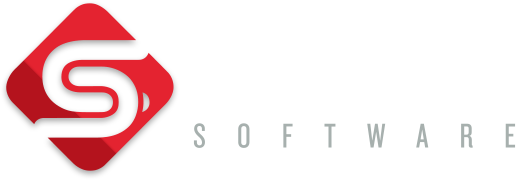As a software tester, I’ve always wondered how organisations like NASA test their critical systems. After all, their systems are unique and complex, and the stakes are almost incomprehensibly high—a single software bug can result in catastrophic failure and loss of life.
With that in mind, I explored how NASA, an organisation synonymous with precision and reliability, manages software quality assurance and builds high-quality software systems.
What I found was a treasure trove of practices that can be incredibly insightful for enterprise-level software testers.
The High Stakes of Space Exploration
Probably the most important thing I learned was that NASA, like every other organisation, has had their fair share of software failures.
Consider the infamous Mariner 1 spacecraft incident in 1962. A single missing hyphen in the code caused the rocket to veer off course, leading to the heartbreaking decision to self-destruct. The error was simple, yet the consequences were profound. The loss was equivalent to about $169 million today, not to mention wasted time and effort.
Another example is the Mars Polar Lander in 1999, where software mistakenly interpreted vibrations during descent as a landing event, shutting down the engines 40 meters above the surface. These failures underscore the critical importance of rigorous software testing in high-stakes environments.
For me, though, NASA’s failures aren’t the actual headline; I was more intrigued by their response.
As a testing professional, I’ve seen first-hand how many (most?) organisations pay lip service to lessons learned but rarely do anything about them. I mean, how often are tangible changes implemented post-project? It’s much more likely to see the same mistakes repeated, from rushed testing phases to missing documentation to ignoring failed tests altogether.
4 Key Ideas Enterprise Software Testers Learn from NASA
1. Leverage Simulated Environments
One of NASA’s most impressive software development feats is its ability to simulate incredibly complex environments through the Jon McBride Software Testing and Research (JSTAR) program.
JSTAR, a critical component of NASA’s Independent Verification and Validation (IV&V) Program, focuses on creating high-fidelity simulations that mirror the exact conditions spacecraft will encounter.
This includes everything from the vacuum of space, microgravity, and radiation exposure to the precise conditions of planetary atmospheres.
These simulations are not just basic models; they are dynamic, adaptive environments that can replicate the intricate physics and environmental conditions that spacecraft will face during a mission.
For instance, the simulation of re-entry into Earth’s atmosphere requires careful modelling of extreme heat, aerodynamic forces, and communication blackouts—all scenarios that can introduce significant software challenges.
In addition to testing under normal conditions, JSTAR’s simulations are designed to stress software systems under abnormal conditions that might occur during a mission.
For example, how does the software react to unexpected power surges, sensor failures, or unexpected physical forces? By pushing the software to its limits, NASA can identify weaknesses that may not be apparent in more straightforward testing scenarios.
While the stakes for enterprise systems might not be as high as those for space exploration, the principle of using detailed simulations holds excellent value.
Enterprises can create virtual environments, network virtualization, and chaos engineering to replicate user behaviour, network conditions, and hardware variations and failures to ensure their software behaves reliably across various scenarios. By integrating techniques into their testing regimes, businesses can anticipate and mitigate issues that would be difficult, costly, or risky to uncover in live production environments.
2. Early Defect Detection
NASA’s Software Formal Inspections Standard (NASA-STD-8739.9) is a cornerstone of its early defect detection approach.
This rigorous standard mandates a thorough and systematic inspection process to catch defects at the earliest stages of the software development life cycle.
The key idea (which applies to all software development) is that defects identified during requirements analysis, design, or early coding stages are exponentially cheaper and easier to fix than those found later in the development process or, worse, during a mission. I am sure that everyone has heard this, however, how many organisations live and breathe this approach, which leads to a reduction of defects found at a later stage. Compared to those that don’t and have the inevitable rush to fix & retest with the extra cost involved.
This standard outlines a structured inspection methodology, including the roles of inspectors, the processes they should follow, and the types of defects they should be looking for.
For example, a multidisciplinary team reviews every piece of code, including software engineers, system engineers, and domain experts. This ensures that the software meets the technical specifications and the mission’s operational requirements.
One of the most critical aspects of this process is the emphasis on checklists.
NASA uses comprehensive checklists during inspections to ensure that every possible type of defect is considered—ranging from simple syntax errors to complex logic flaws or mismatches between software and hardware interfaces. This disciplined approach leaves little room for oversight.
Adopting a similar approach can dramatically improve software quality in enterprise environments. Companies can implement formal code reviews, use detailed checklists, and involve cross-functional teams to catch defects early.
Automated tools can complement this process by performing static code analysis and identifying potential issues before they reach production.
NASA has demonstrated that early defect detection not only reduces the risk of catastrophic failure but also saves time and money in the long run.
3. Clarity of Objectives
At NASA, the clarity and precision of software requirements are paramount.
Given their missions’ complexity and critical nature, every requirement must be meticulously detailed to ensure that the final software product functions exactly as intended.
This is particularly important when multiple teams—often spread across different locations—are involved in the development process. Any ambiguity in requirements can lead to misinterpretations that could have dire consequences.
To achieve this, NASA employs a rigorous requirements engineering process. This begins with gathering requirements from all stakeholders, including engineers, scientists, and mission planners, and translating them into precise, unambiguous specifications.
These requirements are often documented in the form of use cases, flowcharts, and formal specifications that describe in precise detail what the software must do, how it will interact with other systems, and what constraints must be adhered to.
Moreover, NASA utilises traceability matrices to ensure that every requirement is accounted for throughout development.
These matrices link each requirement to corresponding design elements, code modules, and test cases, providing a clear map that guides the entire project. This not only helps in verifying that all requirements are met but also assists in managing changes.
The impact on other system parts can be quickly assessed and addressed if a requirement changes.
In enterprise software development, building clear and detailed requirements, like NASA’s, can reduce the risk of miscommunication and ensure that the software meets the needs of all stakeholders.
Implementing traceability matrices in tools like Quality Center and ValueEdge Quality/Octane can also help complex projects, ensuring that every requirement is traced from conception through to delivery.
4. Scenario-Based Testing
Scenario-based testing is a critical part of NASA’s software verification strategy, and tools like Kontest play a central role in this process.
Kontest simulates a wide array of operational scenarios, allowing NASA engineers to observe how software behaves under different conditions that the spacecraft might encounter during a mission. These scenarios can range from nominal (expected) conditions to off-nominal (unexpected or adverse) situations.
For example, NASA might use Kontest to simulate the software’s response to losing communication with Earth, encountering unexpected debris, or dealing with a sudden malfunction in onboard systems.
Each scenario is designed to push the software to its limits, revealing how it performs under stress and whether it can recover gracefully from unexpected events.
The power of scenario-based testing lies in its ability to expose flaws that might not be apparent in more straightforward test cases. By thinking through and testing against various potential situations, NASA can ensure that its software is functional, robust, and resilient.
In the enterprise world, scenario-based testing can be equally valuable.
Complex systems often operate in diverse and unpredictable environments, interacting with other systems and users in difficult-to-anticipate ways.
Companies can use tools like performance testing and chaos engineering to simulate different operational conditions—such as peak loads, and hardware or network failures—to ensure their software can handle real-world challenges.
Bringing NASA’s Insights Back to Earth
While the average enterprise might not launch rockets or travel to other planets, the principles guiding NASA’s software testing can still provide precious insights, just as Formula 1 cars have informed how road cars are built.
By adopting simulated environments, prioritising early defect detection, clarifying requirements, and leveraging scenario-based testing, enterprise-level testers can significantly improve the reliability and quality of their software systems.
The next time you’re faced with a critical testing decision, consider what NASA might do. After all, if these practices are good enough for missions beyond our planet, they’re worth considering for the software systems that drive our businesses.
Are Your Tools Holding You Back?
Implementing new processes can be challenging without the right tools to support them. Maybe you’re still trying to use Excel or Word to drive your testing efforts or using open-source or other tools with limited flexibility.
Fortunately, there are great tools out for any budget. Tools that are easy to deploy, quick to get going, and robust and ready for enterprise users.
Are you interested in improving your testing processes but lack the software you need to implement them? Contact Calleo today, and we can help you find the right tool at the right price.

















